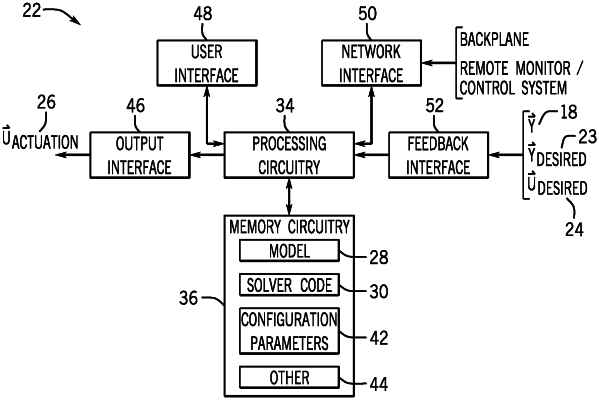| CPC G05B 13/047 (2013.01) [G06F 16/90335 (2019.01); G06F 17/11 (2013.01)] | 20 Claims |

|
1. A method of controlling operation of an industrial automation process, comprising:
performing, using a control system, a first search during a predetermined sample period based at least in part on one or more sensor samples indicative of a state of the industrial automation process to determine a first control trajectory of a plurality of input variables of the industrial automation process;
performing, using the control system, a second search during the predetermined sample period based at least in part on the one or more sensor samples indicative of the state of the industrial automation process to determine a second control trajectory of the plurality of input variables of the industrial automation process;
controlling, using the control system, the operation of the industrial automation process at least in part by:
instructing one or more devices associated with the operation of the industrial automation process to perform a first control action determined based on the first control trajectory in response to determining the first control trajectory within a desired time and that the first control trajectory is an optimal control trajectory; and
instructing the one or more devices to perform a second control action determined based on the second control trajectory in response to the first control trajectory being determined outside of the desired time or the first control trajectory being different from the optimal control trajectory.
|